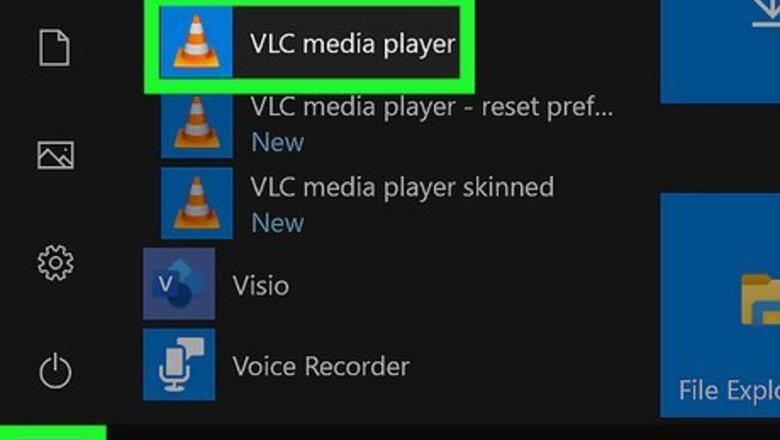
views
- To sync video and audio on a PC, open the video in VLC Player, and press "K" to slow the audio down or "J" to speed it up.
- In VLC Player on a Mac, press "G" to slow the audio down, or "F" to speed it up.
- You can also use the "Merge Clips" option in Adobe Premiere or "Synchronize Clips" in Final Cut Pro to sync audio and video.
Using VLC Player (PC & Mac)

Open VLC Media Player on your computer. VLC is a free multi-platform media player that can correct out-of-sync audio and video on a single file. If you've already installed VLC, you'll find it in your Start menu (Windows) or the Applications folder (macOS). If you haven't yet downloaded VLC, you can do so for free at https://www.videolan.org/vlc/index.html. If the video is streaming from a website like YouTube, the issue may be due to a slow internet connection or low RAM on your computer.
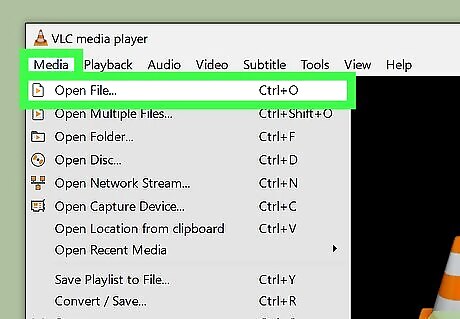
Open your video file. To do so: Click the Media (PC) or File (Mac) menu. Select Open File. Click Open. If the video is streaming from YouTube, highlight the video's URL in your browser's address bar and copy it to the clipboard. Then, on the Media or File menu, click Open location from clipboard and click Play.

Click Play to start the video. Start watching the video from the beginning to determine whether the audio is ahead or behind the video
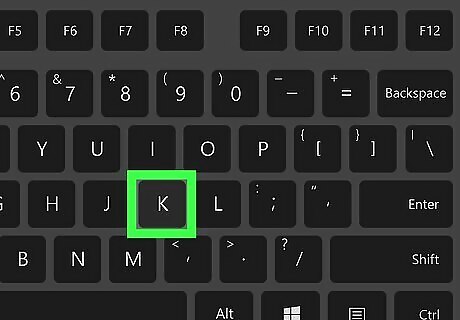
Use keyboard shortcuts to adjust the audio. Pressing the necessary key will adjust the audio track by 50 milliseconds. You can press each key multiple times until you've matched up the tracks. They keyboard shortcuts are as follows: Windows: Press K to slow the audio down. Press J to speed the audio up. Mac: Press G to slow the audio down. Press F to speed the audio up.
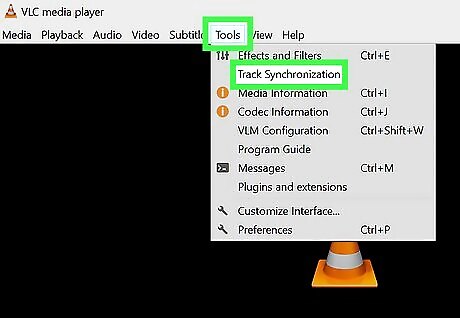
Manually set the synchronization. If you already know the exact number of milliseconds you need to offset the audio track from the video to sync the audio to the video (in milliseconds), you can adjust synchronization manually: Click Tools Click Track Synchronization next to "Audio track synchronization." Enter the number in milliseconds you want to adjust the audio. Enter a negative number if the audio is ahead of the video.
Using VLC Player (Mobile)

Open VLC Media Player on your phone or tablet. If you've already installed VLC, you'll find its orange and white icon on the home screen (iPhone/iPad) or in the app drawer (Android). You can download VLC for free from the Google Play Store on Android]] or the App Store on iPhone and iPad. If the video is streaming from a website like YouTube, the issue may be due to a slow internet connection or too many open apps. Try connecting to a different Wi-Fi network, restarting your phone or tablet, and restarting the video.

Tap the video you want to fix. You will see various videos from your Gallery of Camera Roll when you open VLC. Tap the video with out-of-sync audio. You may have to browse to a different folder to find it. To open a video saved to your device on iPhone and iPad, tap Network at the bottom of the screen. Then tap Local Files (you can also tap Cloud Services). Then tap the video you want to fix.

Play the video. While watching the video, determine if the audio is ahead of the video or behind the video.

Tap the screen to display the controls. The controls will then appear at the bottom of the video.

Open the Audio Delay controls. The steps differ depending on whether you use the Android or iOS version. Use one of the following steps to open the Audio Delay controls: Android: Tap the first icon resembling a movie screen's subtitles, select Audio, and then tap Audio Delay. iPhone/iPad:. Tap the icon with three dots(⋯), select Playback speed, then tap the Audio delay tab.
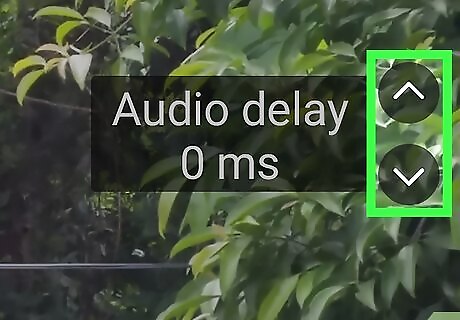
Adjust the audio delay. If the audio is behind the video, increase the delay. If the audio is ahead of the video, reduce the delay. This will save your delay settings automatically. Use one of the following methods to adjust the audio delay: Android: Tap > to increase the audio delay by 50 milliseconds. Tap < to reduce the delay by 50 milliseconds. iPhone/iPad: Drag the slider left to decrease the audio delay, and right to increase it.
Using Adobe Premiere Pro
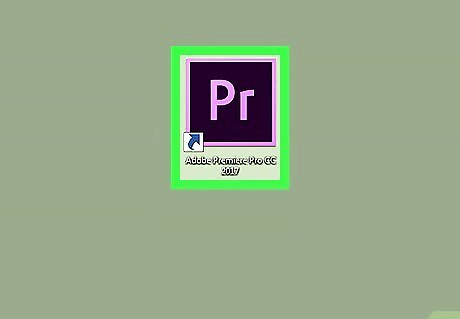
Open Adobe Premiere Pro. If you use Adobe Premiere to edit video, you can easily sync a video with an audio track using the Merge Clips feature. Begin by opening the app, which you'll find in the Start menu (PC) or the Applications folder (Mac). Adobe Premiere Pro is paid software that is part of Adobe Creative Cloud. However, you can sign up for a free trial of all Adobe applications.

Select the audio and video clips on the Project panel. You'll need to select both files, which can be done by holding down Cmd (Mac) or Ctrl (PC) as you click. To import clips into the Project panel, you can either drag and drop the video and audio files into the Project panel, or click "File" followed by "Import" and select the clips you want to import. If you have a single audio clip with out-of-sync audio and video, drag the clip into the timeline at the bottom of the screen. Right-click the clip in the timeline and click Unlink to unlink the audio and video tracks. You can now click and drag the audio track to adjust the audio delay. You can preview the video in the preview window to see if the audio and video are in sync.
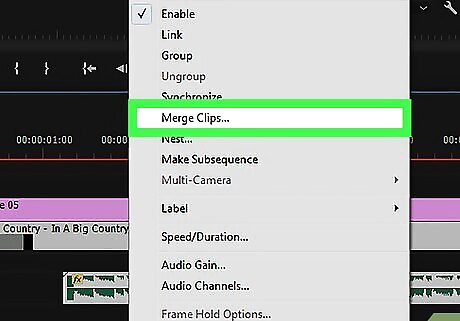
Right-click selected clips and choose Merge Clips. This opens the Merge Clips dialog window.
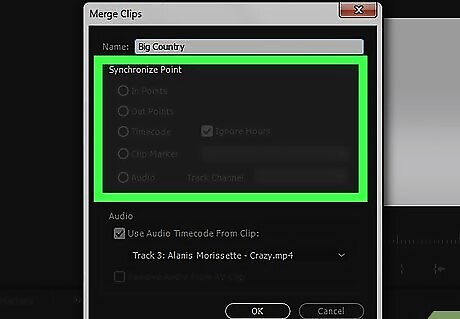
Select a starting point. You can sync the two files based on any of these criteria: Based on the In point syncs based on the In point you specify. Based on the Out point syncs based on the Out point you specify. Based on matching timecode syncs based on a common timecode between the two files. Based on clip markers syncs based on numbered clip markers in the center of a shot. You'll only see this option if both files have at least one numbered marker.
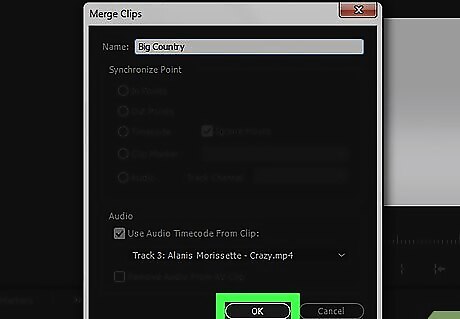
Click OK to sync. Premiere will now sync your audio and video, which may take a while, depending on the size of both files.
Using Final Cut Pro X
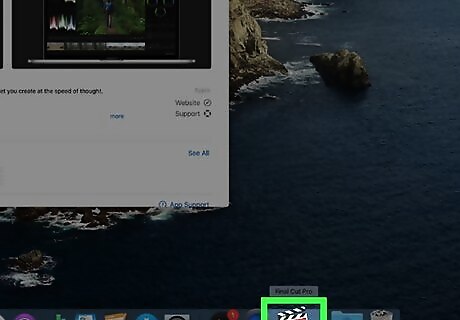
Open Final Cut Pro X on your Mac. If you're using Final Cut Pro to create your movie, you can use its built-in tools to sync audio and video files in a project automatically. You'll find the app in the Applications folder or on the Launchpad. Final Cut Pro X is not free software, but you can get a 30-day full-featured trial by signing up here: https://www.apple.com/final-cut-pro/trial
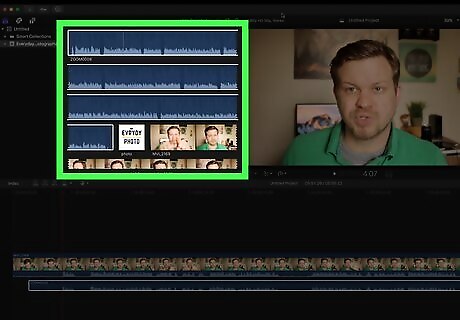
Select the audio and video clips you want to sync. You can sync both clips at once by pressing Cmd as you click their thumbnails in the Browser. If you have a single clip with out-of-sync audio and video, drag the clip into the timeline at the bottom of the screen. Right-click the video clip and click Detach audio. You will see the audio clip below the video clip. You can now click and drag the audio clip to adjust the timing. You can preview the video in the preview to see if it's in sync.
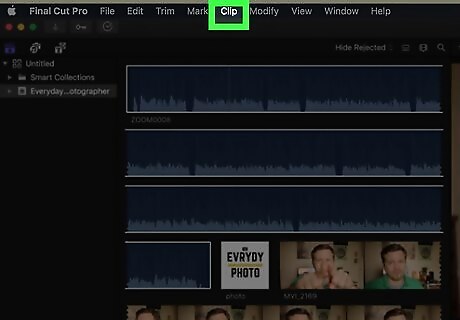
Click the Clip menu. It's at the top of the screen.

Click Synchronize Clips on the menu. A dialog window will appear.

Enter your preferences. Type a name for the synced video into the "Synchronized Clip Name" field. Select an event from the "In Event" drop-down menu to choose an event in which to make the new clip. Syncing will begin at the earliest point in the audio track. If you want to specify a different timecode, enter it into the "Starting Timecode" field. Check the box next to "Use audio for synchronization" to sync based on audio waveforms. This is common, but if the sync processing time is ridiculously long, cancel the sync and try unchecking this option. Click Use Custom Settings to view and edit additional settings if desired.
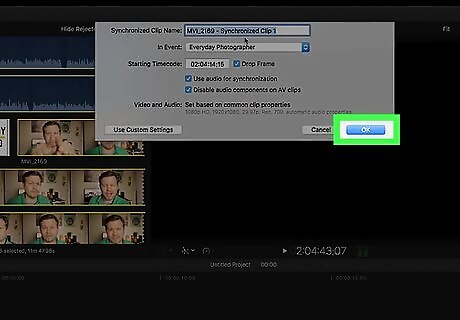
Click OK to start syncing. Final Cut Pro X will now sync your audio and video, which may take a while, depending on the size of both files.



















Comments
0 comment